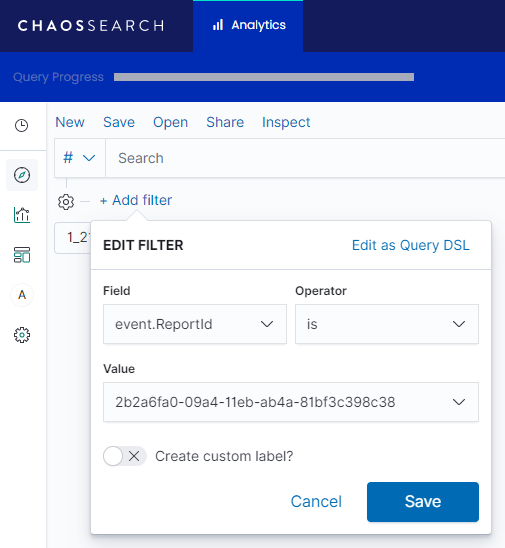CODE
{
"_score": 1,
"_type": "doc",
"_source": {
"vulnerability.enumeration": "135",
"document_size": 3926,
"@timestamp": "2020-11-25T13:32:27.480Z",
"vulnerability.published": "2020-10-29T12:29:25.000Z",
"vulnerability.results": "Package\tInstalled Version\tRequired Version\ne2fsprogs\t1.42.9-12.amzn2.0.2.x86_64\t1.42.9-19.amzn2\ne2fsprogs-libs\t1.42.9-12.amzn2.0.2.x86_64\t1.42.9-19.amzn2\nlibcom_err\t1.42.9-12.amzn2.0.2.x86_64\t1.42.9-19.amzn2\nlibss\t1.42.9-12.amzn2.0.2.x86_64\t1.42.9-19.amzn2\ne2fsprogs\t1.42.9-12.amzn2.0.2.x86_64\t1.42.9-19.amzn2",
"tenant_id": "1024",
"vulnerability.cve": "http://cve.mitre.org/cgi-bin/cvename.cgi?name=CVE-2019-5188",
"host.os.name": "Linux",
"message_size": 0,
"vulnerability.description": "Amazon Linux Security Advisory for e2fsprogs: ALAS2-2020-1509",
"vulnerability.scanner.vendor": "Powered by Qualys",
"_id": 47741608,
"tags": "[\"customer\",\"flow_source_data_miss\",\"default_parent_id\",\"cached_parent_metadata\"]",
"armor_metrics.processing_chain": "[\"KVN_V4_collector_i-0908b8b2b53868dc0|2020-11-25T13:32:27Z\",\"KVN_V4_processor_i-0aa172c88f440b715|2020-11-25T13:32:28Z\"]",
"vulnerability.score.temporal": "5.4",
"vulnerability.solution": "Please refer to Amazon advisory <A HREF=\"https://alas.aws.amazon.com/AL2/ALAS-2020-1509.html\" TARGET=\"_blank\">ALAS-2020-1509</A> for affected packages and patching details, or update with your package manager.\n<P>Patch:<BR>\nFollowing are links for downloading patches to fix the vulnerabilities:\n<P> <A HREF=\"https://alas.aws.amazon.com/AL2/ALAS-2020-1509.html\" TARGET=\"_blank\">ALAS-2020-1509: Amazon Linux 2 (e2fsprogs (1.42.9-19.amzn2) on x86_64)</A><P> <A HREF=\"https://alas.aws.amazon.com/AL2/ALAS-2020-1509.html\" TARGET=\"_blank\">ALAS-2020-1509: Amazon Linux 2 (e2fsprogs (1.42.9-19.amzn2) on aarch64)</A><P> <A HREF=\"https://alas.aws.amazon.com/AL2/ALAS-2020-1509.html\" TARGET=\"_blank\">ALAS-2020-1509: Amazon Linux 2 (e2fsprogs (1.42.9-19.amzn2) on src)</A><P> <A HREF=\"https://alas.aws.amazon.com/AL2/ALAS-2020-1509.html\" TARGET=\"_blank\">ALAS-2020-1509: Amazon Linux 2 (e2fsprogs (1.42.9-19.amzn2) on i686)</A>",
"armor_metrics.input_port": "5445",
"original_timestamp": "2020-11-25T13:32:27.233Z",
"logsource.origin": "unknown",
"vulnerability.score.environmental": "0.0",
"vulnerability.status": "Active",
"vulnerability.category": "[\"AMAZON LINUX\",\"PCI\"]",
"host.ip": "10.0.0.8",
"vulnerability.discovery": "0",
"vulnerability.reference": "https://alas.aws.amazon.com/AL2/ALAS-2020-1509.html",
"vulnerability.report_id": "20201125.133227",
"received_timestamp": "2020-11-25T13:32:27.480Z",
"host.os.full": "Amazon Linux 2",
"vulnerability.pci_flag": "1",
"vulnerability.patchable": "1",
"vulnerability.score.version": "3.0",
"event_uuid": "6d820110-73e5-45c9-945e-10c281fd4cb4",
"vulnerability.last_modification": "2020-10-29T12:29:25.000Z",
"vulnerability.diagnosis": "<DIV>\n Issue Overview:\n <P>An exploitable code execution vulnerability exists in the quota file functionality of E2fsprogs 1.45.3. A specially crafted ext4 partition can cause an out-of-bounds write on the heap, resulting in code execution. An attacker can corrupt a partition to trigger this vulnerability. (<A HREF=\"https://access.redhat.com/security/cve/CVE-2019-5094\" TARGET=\"_blank\">CVE-2019-5094 </A>)</P><P>A code execution vulnerability exists in the directory rehashing functionality of E2fsprogs e2fsck 1.45.4. A specially crafted ext4 directory can cause an out-of-bounds write on the stack, resulting in code execution. An attacker can corrupt a partition to trigger this vulnerability. (<A HREF=\"https://access.redhat.com/security/cve/CVE-2019-5188\" TARGET=\"_blank\">CVE-2019-5188 </A>)</P>\n </DIV>\n\n ",
"labels.parent_id": "1",
"host_asset_id": "75424166",
"vulnerability.vulnerability_type": "VULNERABILITY",
"external_id": "4f5b9ab7-8e57-4993-b0fb-440cd44d11e5",
"vulnerability.score.base": "6.7",
"armor_metrics.latency.processing": 0.8566529750823975,
"vulnerability.severity": "3",
"vulnerability.consequence": "Allows unauthorized disclosure of information; allows unauthorized modification; allows disruption of service.",
"@version": 1,
"host.hostname": "ip-10-0-0-8.us-west-2.compute.internal",
"index_type": "ecs-1.5.0-vulnerability",
"vulnerability.id": "352127"
},
"_id": "47741608",
"_index": "1_1024_customer"
}






